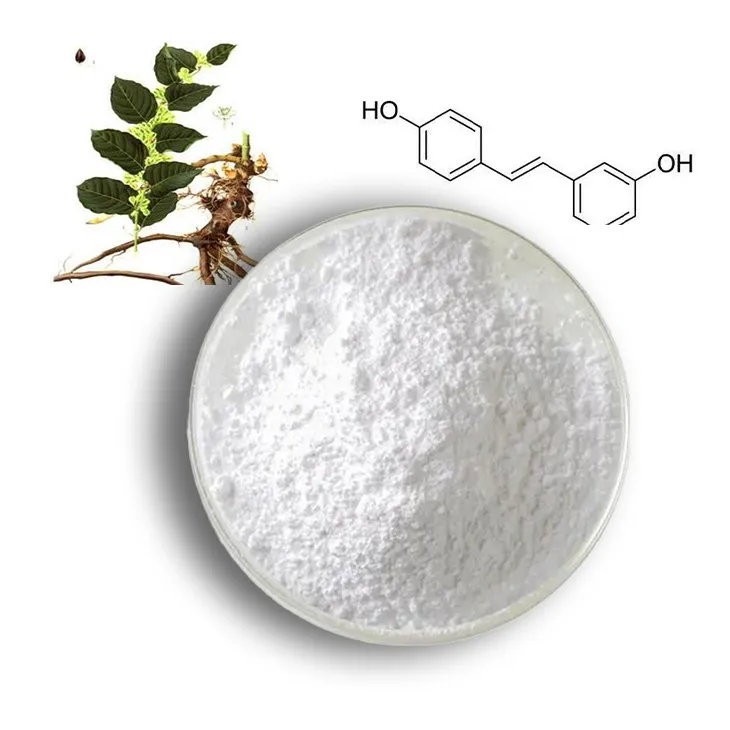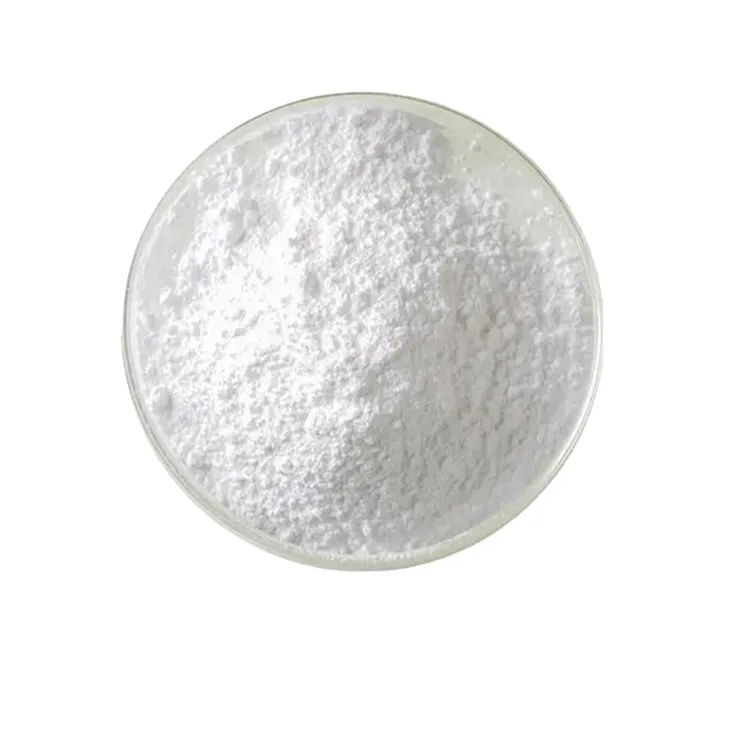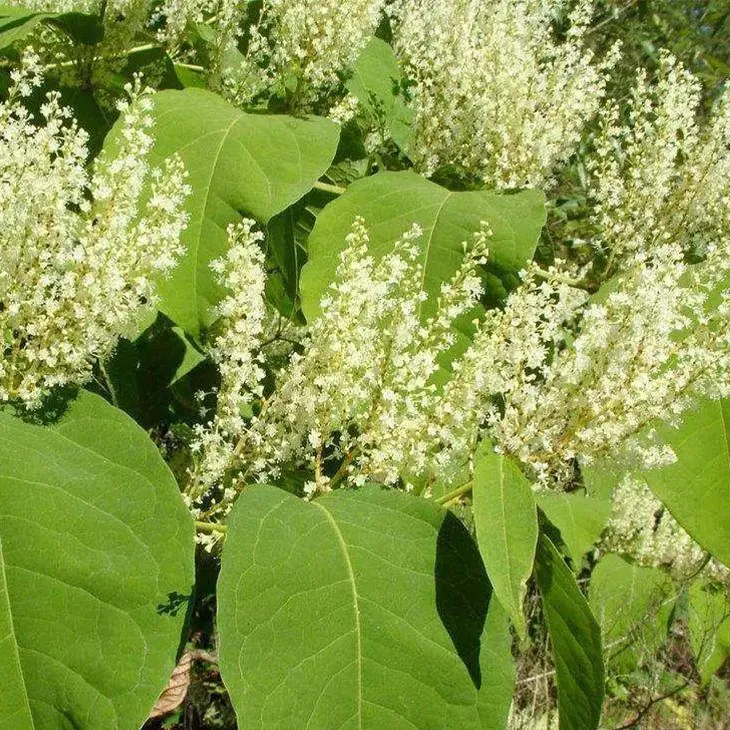- 0086-571-85302990
- sales@greenskybio.com
Organic supercritical CO2 extraction of resveratrol extract.
2024-11-30

1. Introduction
Resveratrol is a natural phenolic compound that has gained significant attention in recent years due to its numerous beneficial properties. It is found in various plants, such as grapes, berries, and peanuts. Resveratrol is well - known for its antioxidant activity, which helps in protecting cells from oxidative damage. Additionally, it has been associated with anti - inflammatory, anti - cancer, and cardioprotective effects. As a result, the demand for high - quality Resveratrol extract has been increasing in the fields of medicine, health supplements, and high - end cosmetics.
The extraction of resveratrol from plant materials is a crucial step in obtaining a pure and effective product. Traditional extraction methods, such as solvent extraction, may have some limitations, including the use of organic solvents that can be harmful to the environment and may leave residues in the extract. In contrast, supercritical CO2 extraction offers a more sustainable and efficient alternative for obtaining Resveratrol extract.

2. Supercritical CO2 Extraction: An Overview
Supercritical fluid extraction (SFE) is a separation technique that utilizes the properties of a supercritical fluid. A supercritical fluid is a substance that is above its critical temperature and critical pressure. In the case of carbon dioxide (CO2), it becomes supercritical at a relatively low temperature (around 31.1°C) and a pressure of 7.38 MPa.
2.1 Properties of Supercritical CO2
Supercritical CO2 has several unique properties that make it an ideal solvent for extraction. It has a low viscosity, which allows it to penetrate easily into plant materials. It also has a high diffusivity, enabling rapid mass transfer. Moreover, supercritical CO2 can be adjusted to have solvent properties similar to organic solvents by varying the pressure and temperature. This tunability makes it possible to selectively extract different components from a complex mixture.
2.2 Advantages of Supercritical CO2 Extraction
There are several advantages of using supercritical CO2 for Resveratrol extraction:
- Environmentally friendly: CO2 is a non - toxic, non - flammable, and greenhouse - gas - like substance. It is readily available and can be recycled, reducing the environmental impact compared to traditional organic solvents.
- High selectivity: By adjusting the extraction conditions, it is possible to selectively extract resveratrol while leaving behind unwanted components. This results in a purer extract with better quality control.
- No solvent residue: Since CO2 is a gas at normal conditions, it can be easily removed from the extract, leaving no solvent residue. This is especially important for applications in the food, pharmaceutical, and cosmetic industries.
- Mild extraction conditions: The extraction can be carried out at relatively low temperatures, which helps to preserve the integrity of heat - sensitive components such as resveratrol. This is in contrast to some traditional extraction methods that may require high - temperature processing.

3. The Process of Organic Supercritical CO2 Extraction of Resveratrol
3.1 Preparation of Plant Material
The first step in the extraction process is the preparation of the plant material. The plant source, such as grape skins or berries, is carefully selected and harvested. It is then dried and ground to a suitable particle size. This helps to increase the surface area of the plant material, facilitating better extraction efficiency.
3.2 Extraction Equipment and Setup
A supercritical CO2 extraction system typically consists of a CO2 supply, a pump to pressurize the CO2, an extraction vessel where the plant material is placed, a separator to separate the extract from the CO2, and a collection vessel for the final extract. The system is designed to maintain precise control over the pressure, temperature, and flow rate of the CO2 during the extraction process.
3.3 Extraction Parameters
The extraction parameters play a crucial role in determining the quality and yield of the resveratrol extract. The main parameters include:
- Pressure: The pressure affects the density and solvent power of supercritical CO2. Generally, a higher pressure can increase the solubility of resveratrol in CO2, but too high a pressure may also lead to the extraction of unwanted components. A typical pressure range for resveratrol extraction is between 10 - 30 MPa.
- Temperature: The temperature also influences the properties of supercritical CO2 and the solubility of resveratrol. Higher temperatures can increase the diffusivity of CO2, but may also cause degradation of resveratrol. A suitable temperature range is usually between 35 - 55°C.
- Flow rate: The flow rate of CO2 determines the mass transfer rate and the extraction time. A higher flow rate can shorten the extraction time, but may also reduce the extraction efficiency. The optimal flow rate needs to be determined based on the specific plant material and extraction system.
- Extraction time: The extraction time affects the yield of resveratrol. Longer extraction times may increase the yield, but may also lead to the extraction of impurities. The extraction time is usually optimized based on the experimental results.
3.4 Separation and Collection of the Extract
After the extraction, the supercritical CO2 containing the resveratrol extract is passed through a separator. In the separator, the pressure and/or temperature are adjusted to cause the CO2 to return to a gaseous state, leaving the resveratrol extract behind. The extract is then collected in a collection vessel. The collected extract may be further purified or processed depending on the intended application.

4. Quality Control and Characterization of Resveratrol Extract
4.1 Quality Control
Quality control is essential to ensure the safety and efficacy of the resveratrol extract. The following aspects are typically considered in quality control:
- Purity: The purity of the resveratrol extract is determined by methods such as high - performance liquid chromatography (HPLC). A high - purity extract is desired for applications in medicine and high - end cosmetics.
- Residual solvents: Although supercritical CO2 extraction leaves no solvent residue, it is still necessary to check for any potential contaminants from the plant material or the extraction equipment. Tests such as gas chromatography - mass spectrometry (GC - MS) can be used to detect and quantify residual solvents.
- Microbial contamination: The plant material used for extraction may be contaminated with microorganisms. Therefore, microbiological tests, such as total plate count and pathogen detection, are carried out to ensure the safety of the extract.
4.2 Characterization of Resveratrol Extract
The characterization of resveratrol extract involves the determination of its chemical composition and physical properties. Some of the common methods used for characterization include:
- HPLC: As mentioned above, HPLC is used to analyze the content of resveratrol and other phenolic compounds in the extract. It can also be used to determine the purity of the extract.
- Spectroscopic methods: Techniques such as ultraviolet - visible (UV - Vis) spectroscopy and infrared (IR) spectroscopy can be used to identify the functional groups present in the extract. This helps in understanding the chemical structure of the resveratrol and related compounds.
- Thermal analysis: Methods such as differential scanning calorimetry (DSC) and thermogravimetric analysis (TGA) can be used to study the thermal stability of the extract. This is important for applications where the extract may be exposed to different temperatures during processing or storage.

5. Applications of Resveratrol Extract
5.1 In Medicine
Resveratrol has shown potential in various medical applications. Its antioxidant and anti - inflammatory properties make it a candidate for the treatment of chronic diseases such as cardiovascular diseases, diabetes, and neurodegenerative disorders. For example, in cardiovascular diseases, resveratrol may help to reduce blood pressure, improve endothelial function, and prevent the formation of atherosclerotic plaques. In diabetes, it may improve insulin sensitivity and regulate blood glucose levels. In neurodegenerative disorders such as Alzheimer's and Parkinson's diseases, resveratrol may have neuroprotective effects by reducing oxidative stress and inflammation in the brain.
5.2 In Health Supplements
As a health supplement, resveratrol extract is often marketed for its antioxidant and anti - aging benefits. It is believed to help in protecting cells from damage caused by free radicals, which are associated with the aging process. Resveratrol may also boost the immune system and improve overall health. Many health supplements containing resveratrol are available in the form of capsules, tablets, or liquid extracts.
5.3 In High - End Cosmetics
In the cosmetic industry, resveratrol extract is used for its antioxidant and skin - protecting properties. It can be incorporated into creams, lotions, and serums to help protect the skin from environmental damage, such as UV radiation and pollution. Resveratrol may also have anti - aging effects on the skin, such as reducing wrinkles and improving skin elasticity. High - end cosmetic products containing resveratrol are often targeted at consumers who are interested in natural and effective skincare solutions.
6. Conclusion
The organic supercritical CO2 extraction of resveratrol extract offers a sustainable and efficient method for obtaining a high - quality product. This extraction method overcomes some of the limitations of traditional extraction techniques, such as the use of harmful solvents and the presence of solvent residues. The ability to control the extraction parameters allows for the production of a pure and selective resveratrol extract, which has a wide range of applications in medicine, health supplements, and high - end cosmetics. As the demand for resveratrol - based products continues to grow, the supercritical CO2 extraction method is likely to play an increasingly important role in the production of resveratrol extract.
FAQ:
What are the advantages of using supercritical CO2 extraction for resveratrol?
The supercritical CO2 extraction process for resveratrol has several advantages. Firstly, it is highly effective in isolating resveratrol from plant materials in an organic way. It also offers better control over the quality and composition of the extract. Moreover, it is a sustainable alternative to traditional extraction techniques, enabling the production of high - grade resveratrol extract for use in various fields such as medicine, health supplements, and high - end cosmetics.
How does supercritical CO2 extraction work for resveratrol?
Supercritical CO2 extraction works by using carbon dioxide in its supercritical state. In this state, CO2 has properties between those of a gas and a liquid. It can penetrate plant materials effectively and selectively dissolve resveratrol. By adjusting the pressure and temperature conditions, the solubility of resveratrol in supercritical CO2 can be optimized, allowing for efficient extraction. After extraction, the CO2 can be easily removed, leaving behind the resveratrol extract.
What makes resveratrol so important?
Resveratrol is a very important compound due to its antioxidant properties. Antioxidants are substances that can prevent or slow damage to cells caused by free radicals. Additionally, resveratrol has other beneficial effects which make it valuable in applications such as medicine, health supplements, and high - end cosmetics. It has been studied for its potential anti - aging, anti - inflammatory, and heart - healthy effects among others.
Can supercritical CO2 extraction be used for other compounds besides resveratrol?
Yes, supercritical CO2 extraction can be used for a wide range of compounds. It is a versatile extraction method that is suitable for many natural products. This is because it can be adjusted to different pressure and temperature conditions to target specific compounds. However, the extraction parameters need to be optimized according to the nature of the compound to be extracted.
What are the quality control aspects in supercritical CO2 extraction of resveratrol?
In supercritical CO2 extraction of resveratrol, quality control is crucial. One aspect is controlling the extraction parameters such as pressure, temperature, and extraction time to ensure consistent extraction efficiency and quality of the resveratrol extract. Another aspect is the purity of the starting plant material, as impurities in the plant can affect the final extract quality. Additionally, proper post - extraction handling and storage of the resveratrol extract are also important to maintain its quality.
Related literature
- Supercritical Fluid Extraction of Resveratrol from Grape Skin"
- "Optimization of Supercritical CO2 Extraction of Resveratrol - Rich Extracts"
- "Resveratrol: Extraction, Bioavailability, and Health Benefits"
TAGS:
What makes resveratrol so important?
Resveratrol is a very important compound due to its antioxidant properties. Antioxidants are substances that can prevent or slow damage to cells caused by free radicals. Additionally, resveratrol has other beneficial effects which make it valuable in applications such as medicine, health supplements, and high - end cosmetics. It has been studied for its potential anti - aging, anti - inflammatory, and heart - healthy effects among others.
Can supercritical CO2 extraction be used for other compounds besides resveratrol?
Yes, supercritical CO2 extraction can be used for a wide range of compounds. It is a versatile extraction method that is suitable for many natural products. This is because it can be adjusted to different pressure and temperature conditions to target specific compounds. However, the extraction parameters need to be optimized according to the nature of the compound to be extracted.
What are the quality control aspects in supercritical CO2 extraction of resveratrol?
In supercritical CO2 extraction of resveratrol, quality control is crucial. One aspect is controlling the extraction parameters such as pressure, temperature, and extraction time to ensure consistent extraction efficiency and quality of the resveratrol extract. Another aspect is the purity of the starting plant material, as impurities in the plant can affect the final extract quality. Additionally, proper post - extraction handling and storage of the resveratrol extract are also important to maintain its quality.
Related literature
- Supercritical Fluid Extraction of Resveratrol from Grape Skin"
- "Optimization of Supercritical CO2 Extraction of Resveratrol - Rich Extracts"
- "Resveratrol: Extraction, Bioavailability, and Health Benefits"
TAGS:
What are the quality control aspects in supercritical CO2 extraction of resveratrol?
In supercritical CO2 extraction of resveratrol, quality control is crucial. One aspect is controlling the extraction parameters such as pressure, temperature, and extraction time to ensure consistent extraction efficiency and quality of the resveratrol extract. Another aspect is the purity of the starting plant material, as impurities in the plant can affect the final extract quality. Additionally, proper post - extraction handling and storage of the resveratrol extract are also important to maintain its quality.
Related literature
- Supercritical Fluid Extraction of Resveratrol from Grape Skin"
- "Optimization of Supercritical CO2 Extraction of Resveratrol - Rich Extracts"
- "Resveratrol: Extraction, Bioavailability, and Health Benefits"
TAGS:
- ▶ Hesperidin
- ▶ Citrus Bioflavonoids
- ▶ Plant Extract
- ▶ lycopene
- ▶ Diosmin
- ▶ Grape seed extract
- ▶ Sea buckthorn Juice Powder
- ▶ Fruit Juice Powder
- ▶ Hops Extract
- ▶ Artichoke Extract
- ▶ Mushroom extract
- ▶ Astaxanthin
- ▶ Green Tea Extract
- ▶ Curcumin
- ▶ Horse Chestnut Extract
- ▶ Other Product
- ▶ Boswellia Serrata Extract
- ▶ Resveratrol
- ▶ Marigold Extract
- ▶ Grape Leaf Extract
- ▶ New Product
- ▶ Aminolevulinic acid
- ▶ Cranberry Extract
- ▶ Red Yeast Rice
- ▶ Red Wine Extract
-
Sea buckthorn oil
2024-11-30
-
White mustard seed extract
2024-11-30
-
Honeysuckle Pollen
2024-11-30
-
Beta Carotene
2024-11-30
-
Senna Leaf Extract
2024-11-30
-
Lemon Juice Powder
2024-11-30
-
Kidney Bean Extract
2024-11-30
-
Acerola Extract
2024-11-30
-
Lemon Balm Extract
2024-11-30
-
Red Wine Extract
2024-11-30





















